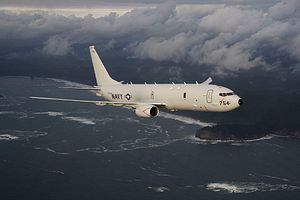The U.S. State Department officially approved the possible sale of four P-8A Poseidon Maritime Surveillance Aircraft to New Zealand on April 27, according to a press release published by the U.S. Defense Security Cooperation Agency (DSCA) — the Pentagon’s lead agency on arms sales to allied nations.
“This proposed sale will enhance the foreign policy and national security of the United States by strengthening the security of a Major Non-NATO ally which has been, and continues to be, an important force for political stability within the region,” DSCA states. “New Zealand is a close ally in the region and an important partner on critical foreign policy and defense issues.”
The $1.46 billion deal includes training and associated technical and logistical support for the Royal New Zealand Air Force (RNZAF). However, according to the New Zealand Defense Force (NZDF), the New Zealand government has not committed to the sale so far. The NZDF said that the $1.46 billion price tag was higher than expected and negotiations would continue in the coming months.
Other contenders include the Airbus DS C295 MPA and Japan’s Kawasaki P-1 maritime patrol aircraft, among others. Once selected, the new aircraft are slated to replace the RNZAF’s six P-3K2 Orion maritime patrol aircraft under the RNZAF’s so-called Future Air Surveillance Capability project by 2025.
New Zealand’s Ministry of Defense awarded U.S. aircraft maker Boeing a $24.1 million contract for the upgrade of six P-3K2 Orion in April 2016. “The new upgrade will equip the aircraft with a new underwater intelligence, surveillance, and reconnaissance capability package in order to boost the P-3K2 planes’ anti-submarine warfare capabilities,” I explained last year.
While the upgrade will temporarily improve the RNZAF’s anti-submarine warfare capability, the P-3K2s will nevertheless reach the end of their service life within a decade. The P-3 Orion maritime patrol aircraft was first introduced into service in 1966, when the first five planes were inducted by the RNZAF. In 1985 an additional used P-3 aircraft was purchased from the Royal Australian Air Force (RAAF). The aircraft underwent an upgrade in the 1980s under the defense ministry’s Project RIGEL.
The P-8A, a military variant of Boeing’s Next-Generation 737-800 commercial aircraft, was specifically designed to replace the United States Navy’s fleet of P-3 Orion aircraft. As I noted in February 2016:
The P-8A has a range of up to 7,242 kilometers (4,500 miles) without refueling, reaches speeds of up to 490 knots, and can fly in the “harshest maritime flight regimes, including extended operations in icing environments,” Boeing boasts.
The aircraft can carry several types of bombs, Raytheon Mark 54 lightweight torpedoes (…), mines, and depth charges, in addition to air-to-surface missiles installed on the underwing hardpoints.
The P-8A also has the capability to control a number of unmanned aerial vehicles (UAVs) to extend sensor reach. Given that the RNZAF’s maritime patrol aircraft will be cut by a third from six to four, the defense ministry is mulling purchasing a number of UAVs and deploying them in maritime surveillance roles to cover the RNZAF’s extensive maritime area of responsibility.
































